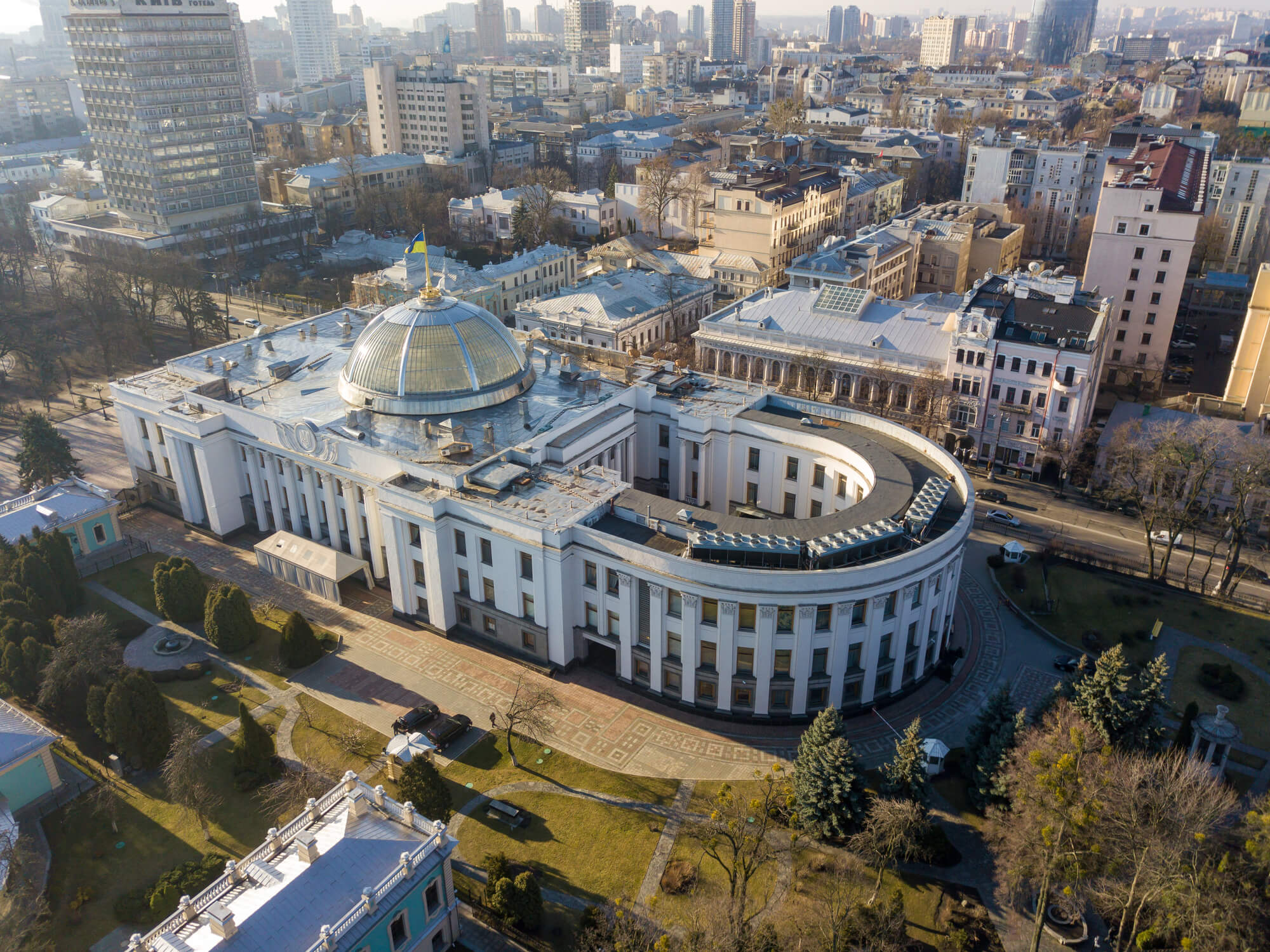NATO continues to express unwavering solidarity with Ukraine in the face of Russian aggression. However, criticism about the slow pace of reforms has led to doubts about the effectiveness of costly Western assistance programmes. It would be wrong to lay all the blame for problems in the current NATO-Ukraine partnership at Kyiv’s door.
The current build-up of Russian troops on Ukraine’s eastern border has led to much speculation about the Kremlin’s intentions and to fears about another invasion in the coming winter months. Russian military activities have been accompanied by various warnings from Moscow about ‘red lines’ regarding NATO’s military support of Ukraine and the latter’s potential membership in the alliance. Any guarantees ruling out future Ukrainian membership in the alliance, which President Putin reportedly demanded from his US counterpart during their meeting on 8th December, have been strictly rejected. After all, NATO’s open door policy enshrined in Article 10 of its founding treaty welcomes ‘any European country in a position to undertake the commitments and obligations of membership, and to contribute to security in the Euro-Atlantic area’.
NATO cooperation with Ukraine dates back almost 30 years and has seriously accelerated since the annexation of Crimea and the start of the ongoing war in Donbas. A wide-ranging defense reform programme, announced by Kyiv in 2015 and strongly supported by NATO, has led to serious improvements in the Ukrainian armed forces’ capabilities and interoperability. The alliance itself today describes its relationship with Ukraine as one of its ‘most substantial’ partnerships. Yet, Kyiv seems to be no closer to achieving its ambition of NATO membership.
From the point of view of the alliance, one reason for this is the slow pace of domestic reforms, including ongoing corruption, the military leadership’s conservative ‘Soviet’ mind-set, slow progress in strengthening institutions required for democratic civilian control over the armed forces, and a lack of political direction. The existence of domestic obstacles to military reforms in Ukraine and elsewhere in the former Soviet region has been well documented and is not in doubt. However, these obstacles are not the only reasons for why Ukraine appears no closer to turning its membership aspirations into reality.
Diverging views by NATO and Ukraine about the priorities of defense reforms since 2014, inconsistencies in NATO’s criteria for the success of reforms, and the lack of a clear vision about what kind of armed forces Ukraine requires all have contributed to current difficulties in the NATO-Ukrainian partnership.
Priorities of defense reforms before and since 2014
There is a divergence in NATO’s and Ukraine’s views on the priorities of defense reform since 2014, which have led to a sense of disappointment and disillusionment on both sides.
NATO evaluated the annexation of Crimea as a serious threat to European and transatlantic security. The alliance condemned the actions of the Russian Federation in the strongest terms and offered robust support to Ukraine. Yet, NATO’s view on the fundamental trajectory of defense reform cooperation with Ukraine has not changed substantially as a result of Russian aggression.
NATO-Ukraine relations date back to the 1990s and started when Ukraine was one of the first countries to join the Partnership for Peace (PFP) program. This was created in 1994 in order to ‘increase stability, diminish threats to peace and build strengthened security relationships’ in the Euro-Atlantic area on the basis of ‘commitment to democratic principles’. In 1997, Ukrainian and allied heads of state signed a Charter on a Distinctive Partnership, based on which the NATO-Ukraine Commission, a decision-making body for developing relations and cooperation, was established. The NATO-Ukraine Joint Working Group on Defense Reform was created under the auspices of the NATO-Ukraine Commission in 1998. To support cooperation on the ground, the NATO Information and Documentation Centre and NATO Liaison Office had been active in Ukraine since 1997 and 1999 respectively to inform the public about NATO and the benefits of cooperation, and to assist with defense and security sector reforms.
After the annexation of Crimea, NATO significantly stepped up this cooperation with the adoption of the Comprehensive Assistance Package, comprising 16 capacity-building projects and Trust Funds agreed at the NATO Summit in 2016. Moreover, in 2020 Ukraine was recognized as one of six NATO Enhanced Opportunities Partners, which granted it ‘enhanced access to interoperability programmes and exercises’. Several bilateral training missions led by NATO partners are continuing to provide training and capacity building for Ukrainian troops on the ground.
Although NATO support for Ukraine dramatically intensified since 2014, the alliance’s main focus remains on reforms of the defense and security sector broadly defined as non-lethal assistance. There is a strong emphasis on democratic development as the basis for creating a more effective fighting force and credible military deterrent against Russia in the longer term. In other words, fostering shared norms and values and the establishment of democratic institutions takes priority over purely military aspects of reforms, such as tactical and technological compatibility. Slow progress in the former area has led to some doubts in NATO about the effectiveness of costly military assistance programs.
In contrast, from the point of view of Ukraine, the annexation of Crimea and ongoing Russian aggression presents an existential threat to its national security and territorial integrity that necessitated a fundamental reconsideration of its strategic priorities and defense requirements. The country had positively engaged with NATO to varying degrees since 1994, but the lack of domestic political agreement on its geopolitical orientation up until 2014 hindered the pursuit of systematic defense reforms. Until well into the 2000s, reforms amounted to little more than downsizing its costly and inefficient Soviet legacy force. A degree of clarity on what kind of armed forces Ukraine wanted emerged under the firmly pro-Western leadership of President Viktor Yushchenko in 2005. He expressed strong support for developing interoperability with NATO with a view to full membership. He perceived this to be in Ukraine’s best interest, both as a means for transforming the military systematically and sustainably, and in support of wider democratic developments. The State Programme for the Development of the Armed Forces of Ukraine for 2006-2011 prioritized the development of a much reduced but highly skilled professional force suitable, above all, for participation in multinational operations. When Yushchenko was replaced by Viktor Yanukovych in 2010, the explicitly pro-NATO outlook was reversed, and instead an approach of ‘malign neglect’ predominated, but one that included accelerated plans for further reductions of the armed forces.
The annexation of Crimea sharply focused Ukraine’s strategic priorities and understanding of its defense requirements. Any ambiguity about its geopolitical outlook, which had been reflected in the neutral or non-aligned security orientation of previous defense planning documents, was removed when the 2015 military doctrine named Russia as a military adversary. Preparedness for small-war type scenarios moved to the background as the need for capabilities required for dealing with large-scale armed aggression by a state adversary became relevant again. Kyiv unequivocally chose the Euro-Atlantic path and in 2017 constitutionally formalized the goal of full NATO interoperability by 2020 and future membership in the alliance. Given the disparities in military power between Ukraine and its powerful neighbor, this was seen as the only realistic way for establishing a credible military deterrent against future Russian aggression.
In the face of the clear and present danger Ukraine was facing, military reforms more narrowly defined, specifically through access to advanced technology and the tactical training of troops, were seen as the most immediate priority. Although individual NATO partners have started to supply Ukraine with lethal weapons, others have strongly opposed this and official alliance communications continue to prioritize ‘comprehensive reforms in the security and defense sector’, seeing this as vital ‘for Ukraine’s democratic development and for strengthening its ability to defend itself’. In Kyiv, this has led to a sense of disappointment about the perceived implication that NATO, despite strong expressions of support, is not sharing its sense of urgency about the country’s precarious security situation.
Slow progress with the political aspects of the reforms has led to some doubts in NATO about Ukraine’s commitment to democratic development and questions about the effectiveness of costly assistance programs. The prioritization of military capabilities during wartime does not mean, however, that wider reforms are not seen as necessary or desirable, as the ongoing work in the Ukrainian parliament to strengthen the legal basis for civilian oversight demonstrates. Moreover, as the experience of defense and security sector reforms in various developing and transition countries has demonstrated, fundamental adjustments to the system of civilian control over the armed forces have been extremely difficult, if not impossible to achieve during wartime.
Criteria for the success of reforms
In addition to differences in views on the priorities of defense reform in the post-2014 security environment, a lack of clarity about what it means for a country to be considered fully NATO interoperable has affected the NATO-Ukrainian partnership, especially from Kyiv’s perspective.
As mentioned above, according to the NATO website by 2021, relations between the alliance and Ukraine, dating back to the early 1990s, have ‘developed into one of the most substantial of NATO’s partnerships’. Official statements repeatedly have confirmed that this partnership is not a one-sided process, but mutually beneficial. When Ukraine became one of six NATO Enhanced Opportunities Partners in 2020, joining countries like Sweden, Finland and Australia, this status was awarded not with reference to the war with Russia, but in recognition of the ‘significant contributions’ Ukraine had made to NATO-led operations and missions in the past. Ukraine provided specialist support to such operations since the 1990s, including in Bosnia Herzegovina, Kosovo, Afghanistan and Iraq. In 2010, Ukraine joined NATO’s Rapid Response Force (NRF), described by the alliance as a ‘highly ready and technologically advanced multinational force’, and was the first non-member state to receive certification of a Special Operations Forces unit for involvement in the NRF in 2019. In addition to direct support of operations, Ukrainian troops have regularly participated in exercises held by NATO and individual alliance members.
Ukraine has a wealth of experience, gained over decades, of operating alongside NATO troops, and recent reforms and the Comprehensive Assistance Package have further strengthened operational capabilities in line with alliance standards. As such, from a military point of view, Ukrainian troops are already more interoperable than some of the Central European states who were admitted to NATO at the end of the 1990s without any notable experience of multinational operations and without having completed systematic military reforms.
Yet, as discussed above, Ukraine is considered far from achieving full interoperability, because of deficiencies in its democratic development. After the end of the Cold War, NATO widened its purely military-defensive focus to include broader aims related to the promotion of shared norms and democracy. These changing priorities were reflected in the remit of PfP and the Membership Action Plan (MAP) Programme launched in 1999. However, expectations about the level of democratic consolidation of aspirant states have varied in the past and were never absolute. Even today, work around anti-corruption and rule-of-law reforms is an ongoing process in more than one of the more recent NATO members.
Given the strength and longevity of the NATO-Ukraine partnership, these seemingly changing goalposts for interoperability – militarily and politically – have led to disappointment in Kyiv, because of the perceived implication that its achievements and contributions are not adequately recognized and rewarded. Moreover, there is a growing sense in Ukraine that, rather than being an exercise in fulfilling a list of expectations, NATO membership in its case is a political question that might not be answered in its favor even if comprehensive reforms were successfully completed. As President Volodymyr Zelensky put it in September 2021, ‘Ukraine is knocking at a door that nobody intends to open’.
What kind of armed forces does Ukraine need?
Both NATO and Ukraine agree that the immediate objectives of defense reforms are NATO interoperability and the establishment of a credible military deterrent against Russia. The question whether these objectives are necessarily compatible, however, remains unanswered. Does the emphasis on meeting NATO standards by both sides come at the expense of assessing Ukraine’s defense requirements on the basis of its specific threat environment? Especially if interoperability is not pursued explicitly towards the aim of full membership, the experience of past NATO-Ukraine cooperation needs to be considered.
Ukrainian defense reforms were influenced by alliance priorities since the mid-1990s. Emulating developments in the West, Kyiv’s focus increasingly moved from conventional, state-on-state warfare to ‘new war’ type scenarios. The State Programme for the Armed Forces of Ukraine’s Development for 2006-2011 in particular outlined plans for the creation of what the British defense expert Deborah Sanders called a ‘paradigm army’, or ideal-type of modern military based on the post-Cold War US model: a leaner, more professional force, equipped with modern technology, and rapidly deployable across the spectrum of conflict with a focus on deployments for multinational operations. As mentioned above, Yanukovych not only reversed this trajectory following his election in 2010, but arguably set out to methodically destroy the country’s existing military capabilities. It is clear, however, that streamlining military reforms with the alliance’s priority of building capabilities required for multinational out-of-area operations did little to prepare Ukraine’s armed forces to defend against large-scale military aggression by a state adversary.
There are serious questions to be asked about what kind of armed forces Ukraine needs. Especially if full NATO membership is unlikely in the immediate future, more clarity is required about how interoperability will help to deliver Ukraine’s defense requirement in the face of an aggressive Russia. An often-criticized domestic factor in the way of efficient defense reforms in Ukraine is the foot-dragging by conservative military leaders. They present an obstacle in the way of achieving NATO interoperability, because of their inability to move on from Soviet-era thinking about war and warfare. As such, NATO partners involved in defense reform cooperation with Ukraine consider advice on doctrinal updates a particularly important area of activity but have expressed frustration about the slow progress with which modern alliance concepts are internalized and introduced, for example, into Ukrainian military educational establishments.
A conservative military leadership opposing, or obstructing reform and innovation is not unique to Ukraine’s experience, and the need for serious changes in its armed forces’ organizational culture is not in question. However, when it comes to doctrinal renewal, especially at the highest strategic level, the problems are bigger than the inability of conservative generals to move on. Even if the Ukrainian armed forces fully internalized modern NATO concepts and terminology, the country would be no closer to a solution for building a credible deterrent against Russia as a non-member of the alliance. There are difficult questions to be asked about Ukrainian military doctrine and defense requirements. If left unanswered, they will not be without consequence for the future of the NATO-Ukraine partnership.
Conclusion
NATO and Ukraine will soon be able to look back on 30 years of cooperation. Although the partnership has not been without problems, it has largely been positive with lasting commitment from both sides. Within the realm of its capabilities, Ukraine has made significant contributions to alliance operations dating back to the 1990s and more recently Kyiv declared its unambiguous choice of the Euro-Atlantic path. NATO, in turn, has supported the country with assistance in defense and security sector reforms. When Ukraine faced hostile military action by Russia from 2014, NATO expressed resolute support and solidarity. Assistance with defense and security sector reforms was stepped up significantly and these efforts have already borne fruit.
In the last few years, however, there have been signs of growing discord in NATO-Ukraine relations. There is some frustration on the part of the alliance with the slow pace of domestic political reforms and a growing feeling in Ukraine that NATO could do more to help it build capabilities for deterring further hostile Russian actions. Although there is a clear need for Kyiv to deal with a range of serious domestic factors standing in the way of successful reforms of the defense and security sector, it is not wholly to blame for emerging problems in the partnership. NATO also needs to ask itself some serious questions about its relationship with Ukraine.
Attention
The authors do not work for, consult to, own shares in or receive funding from any company or organization that would benefit from this article, and have no relevant affiliations



